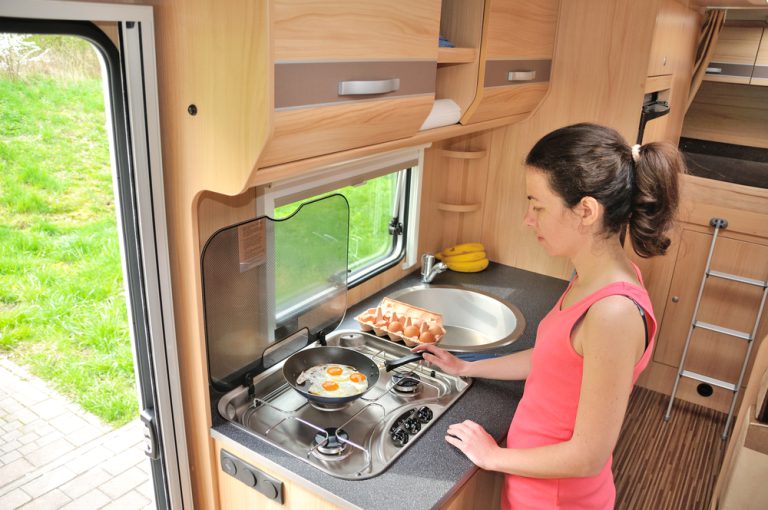

Every experienced RVer knows that keeping the airflow in your motorhome is of the utmost importance. You want to be comfortable while in your rig, and stale air that may have lingering odors doesn’t exactly make for a comfortable experience. RV vents are important to keep air circulating, replacing stale air with fresh air and removing odors and humidity.
But have you ever thought about the importance of other vents in your RV? This can include an RV range hood vent, which can help remove odors and humidity when you’re cooking in your motorhome. It can also remove heat and steam created when you’re cooking, which can help to cool down the RV, keeping it comfortable while you cook.
There are a wide range of features available in an RV stove vent. Some of the most basic models are just an RV range vent, which can vent some of the odors and humidity on their own. They are typically louvered on the outside to stop rain away from the vent and protect your RV from damage from weather.
Other models have additional features such as an RV range vent with fan, that can pull out even more odors from cooking, eliminate smells, remove heat, steam and circulate air. These types of vents look more similar to those you would find in your kitchen at home.
A powered RV stove vent with fan typically does require an electricity hookup, as the fan is a 12V fan. These types of RV range hoods also may come with a built-in light and an RV stove vent cover.
When shopping for an RV range hood vent, think about how often you’ll want to use all the features. Do you prefer to draw as much stale air and odors out of your RV as possible, or are you comfortable with a vent that just draws out the minimum?
If you don’t cook in your rig often, you may be fine with a standard RV stove vent. If you love to cook meals in your RV, you may want an RV range vent to combat odors from cooking lingering as well as reducing heat and humidity. If you purchase an RV stove vent with fan, make sure you run it every time you cook, even if it’s a dish that may not cause odors.
You’ll also want to make sure you’re choosing a replacement RV stove vent that fits into your existing vent space. Before you start your shopping, measure the existing RV range vent on the inside and the outside, so you have the exact measurements and can purchase a new range vent that fits what’s already there. Trust us – you’ll appreciate this step during installation!
To install an RV range hood vent that doesn’t require wiring or electricity, you simply remove the existing vent, clean the trailer sidewall of all existing debris, dirt or leftover sealant. Once the area is clear, apply sealant and insert the vent into the opening. Next, install the screws to hold the vent to the trailer wall!
If there is wiring involved, make sure to first disconnect existing wiring and remove the screws to remove the old RV range hood vent. Use sealant if you’d like, insert the new stove range and screw in to hold into place, then reconnect the wiring.
An RV stove vent isn’t the first vent accessory you think of, but it can play an important part in keeping your RV well circulated and free of cooking odors!






